Complete Solutions to SELECTED PROBLEMS (FROM WORK DONE AND INDICATOR DIAGRAM ) of chapter INTERNAL ENERGY of Class 11 book with complete answers and questions
| Class 11 | PHYSICS |
| Chapter | INTERNAL ENERGY |
| S CHAND | SELECTED PROBLEMS (FROM WORK DONE AND INDICATOR DIAGRAM ) |
| Number Of Questions | 13 |
| Academic Year | 2023-24 |
In changing the state of a gas adiabatically from an equilibrium state A to another equilibrium state B, an amount of work equal to 22.3 J is done on the system. If the gas is taken from state A to B, via a process in which the net heat absorbed by the system is 9.35 cal, how much is the net work done by the system in the latter case ?
View SolutionWhen a gas is heated its volume increases from 100 cc to 500cc, at a constant pressure of 1 atmospher. Calculate the heat needed for doing external work.
View SolutionFor a particular gas `gamma = (5)/(3)`and is heated at constant pressure. Calculate the percentage of total heat supplied, used for external work.
View SolutionA certain quantity of air is adiabatically compressed so that its pressure increases from 1 atmosphere to 150 atmosphere. If the initial temperature of air is `27^(@)C`. Calculate (i) rise in temperature and (ii) the work done of air Y= 1.4).
View SolutionA gas occupying a volume of `10^(-2) m ^(3).` at a pressure of 5 atmospheres expands isothermally to a pressure of 1 atmosphere. Calculate the work done.
View SolutionCalculate the minimum work that must be done to compress 1.0 gm of hydrogen at N.T.P. to half its initial volume. Given `R =8.314 J mol ^(-1) K ^(-1).`
View SolutionAn ideal gas of volume 1 litre and at a pressure 8 atm undergoes an adiabatic expansion until its pressure drops to 1 atm and volume increase to 4 liters. Calculate the work done in the process (y = 1.5).
View SolutionThe PV diagram for cyclic process is a triangle ABC see Fig. drawn in order. The co-ordinates of A, B and Care (4,1), (2,4) and (2,1). The co-ordinates are in order of P and V in which P is `N/m^2` and volume is in litre. Calculate the work done during the process from A to B, B to C and C to A. Also calculate the work done in the complete cycle.
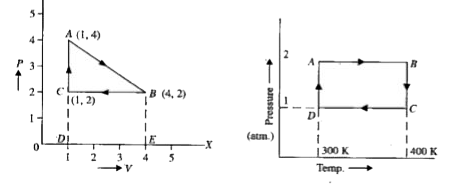
View SolutionTwo moles of helium gas undergo a cyclic process as shown in Fig. 19.2.14. Assuming the gas to be ideal, calculate the following quantitites in this process
(a) the net change in heat energy
(b) the net work done
(c) the net change in internal energy.
View SolutionAn ideal gas is taken around the cycle ABCA as shown in P-V diagram. The net work done during the cycle is equal to :
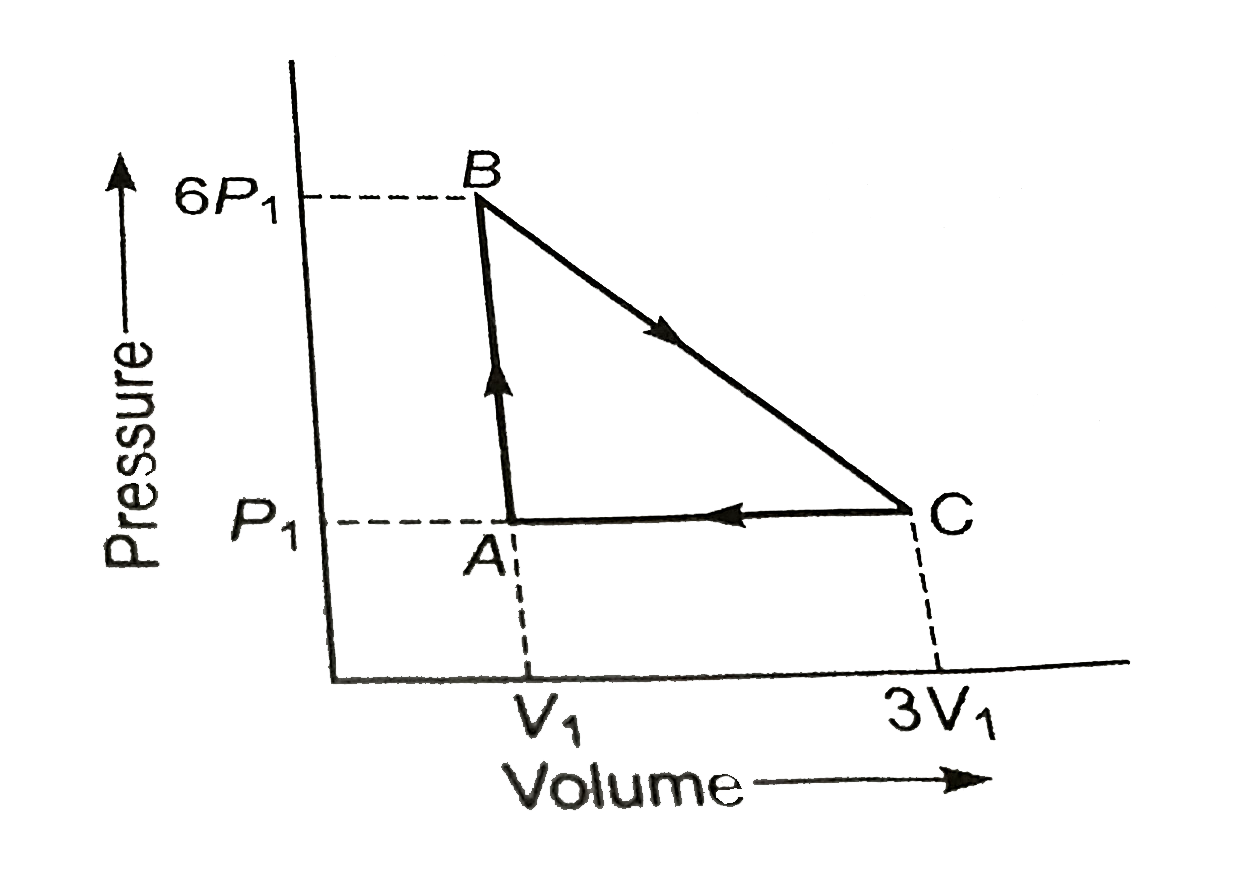
View SolutionAn ideal gas undergoes a thermodynamic process as shown in Fig. The process consists of two isobaric and two isothermal steps. Show that the network done during the whole process is
`W _((Net))`` = P _(1) (V _(2) - V _(1)) log _(e)""(P_(2))/( P _(1))`
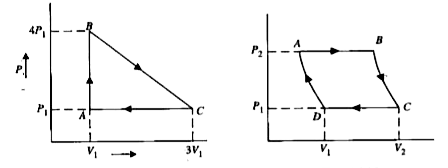
View SolutionA gas expands from A to C along three different paths as shown in Fig. What is the work done by the gas along the path ABC, AC and ADC?
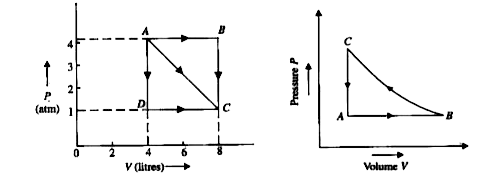
View Solutionconsider the cyclic process ABCA on a sample of 2.0 mol of an ideal gas as shown in the fig. temperature of the gas at A and B are 300 K and 500 k respectively. A total of 1200 J heat is withdrawn from the sample in the process. Find the work done by the gas in part BC. take `R=8.3 JK^(-1) mol^(-1)`
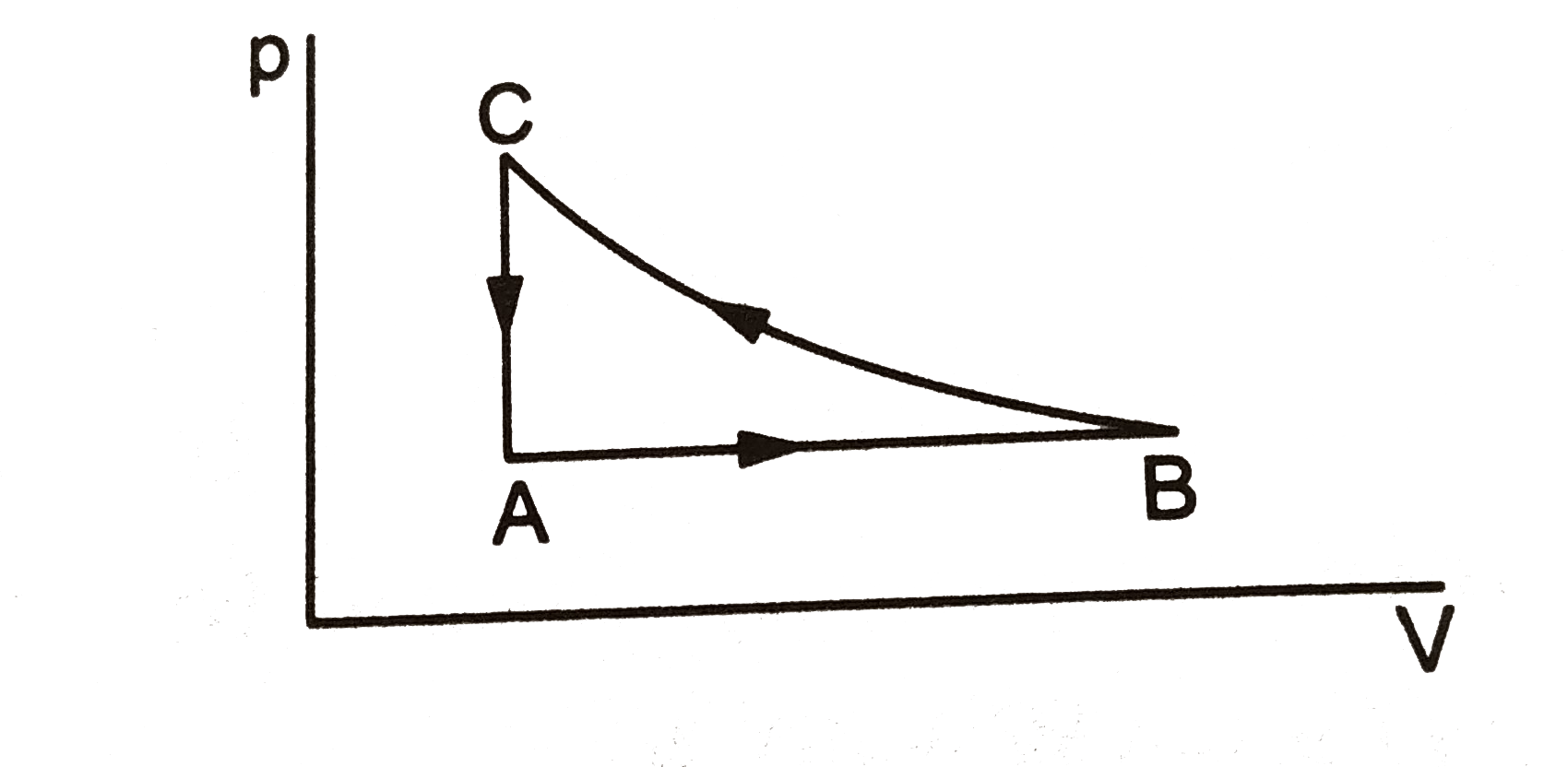
View Solution
SELECTED PROBLEMS (FROM WORK DONE AND INDICATOR DIAGRAM ) questions and complete solutions for chapter INTERNAL ENERGY of S CHAND PHYSICS (ENGLISH) of Class 11
All Exercises from S CHAND Class 11 PHYSICS INTERNAL ENERGY
- ADDITIONAL SOLVED PROBLEMS
- CONCEPTUAL SHORT ANSWER QUESTIONS WITH ANSWERS
- EXAMPLE
- LONG ANSWER QUESTIONS
- SELECTED PROBLEMS (FROM FIRST LAW OF THERMODYNAMICS )
- SELECTED PROBLEMS (FROM HEAT ENGINES)
- SELECTED PROBLEMS (FROM ISOTHERMAL AND ADIABATIC PROCESSES )
- SELECTED PROBLEMS (FROM WORK DONE AND INDICATOR DIAGRAM )
- SHORT ANSWER QUESTIONS
- SOLVED EXAMPLES
- VERY SHORT ANSWER QUESTIONS